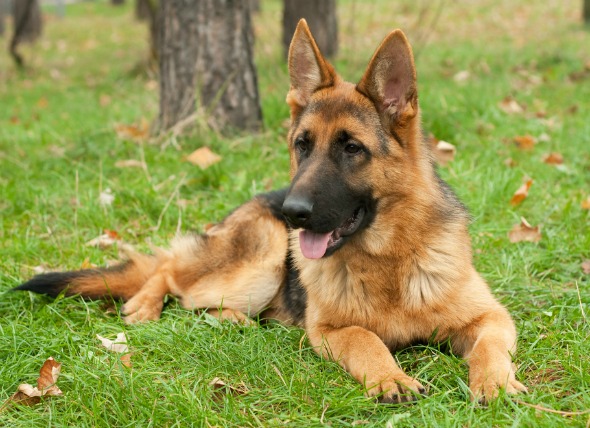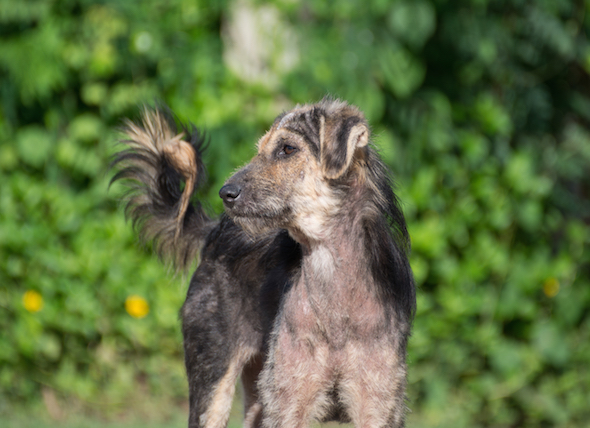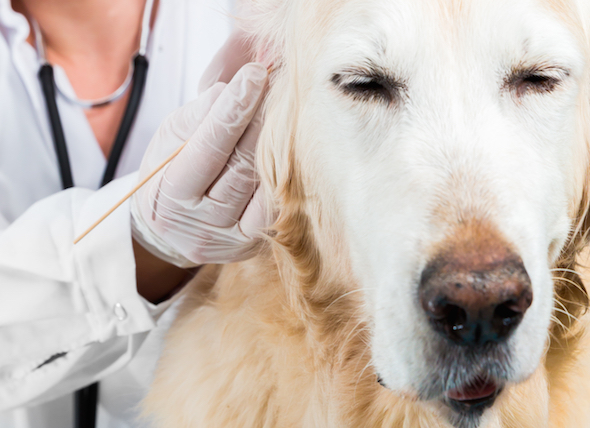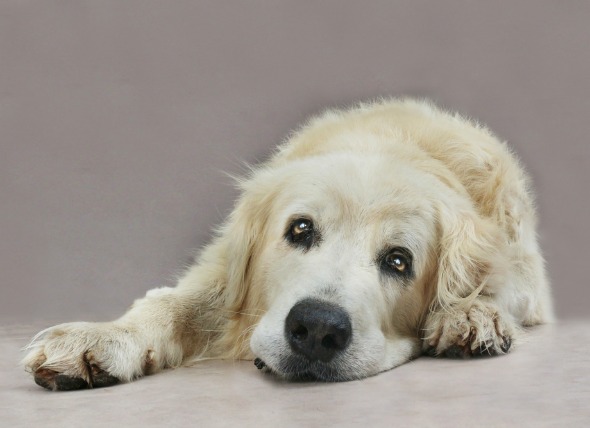
Chondrosarcomas are characteristic for their slow but progressive invasion of the surrounding tissues. These malignant, cancerous tumors originate in the cartilage, the connective tissue between bones. They are often mistaken for benign (non-spreading) tumors because of their slow spread and lack of symptoms. They are often found by accident, when they have become large enough to notice, appearing as a lump in the mouth or under the skin of the face, or when they have started to cause pain for the affected animal.
These tumors have a smooth to slightly nodular surface and will often stick to bone, often in the upper jaw, where it is also possible for the tumor to further metastasize (i.e., into the bone). They may also spread to the lungs and sometimes into the lymph nodes.
This cancer is relatively rare in dogs, especially compared to other types of chondrosarcomas. When it does occur, it is usually in dogs that are middle-aged and older. Large breed dogs also appear to be more predisposed to oral chondrosarcomas.
Chondrosarcomas are commonly located on the upper jaw, which may cause facial deformity or loose teeth. Other symptoms may include:
You will need to give your veterinarian a thorough history of your dog's health and onset of symptoms. A thorough physical exam in this case will include X-rays of the skull to determine the exact location and severity of the tumor, and to see if it has spread into the bone. Chest X-rays can allow your veterinarian to examine your dog's lungs for further spread of the cancer.
A large, deep-tissue sample (down to the bone) is required to definitively diagnose the tumor type. If your dog's lymph nodes are enlarged, your veterinarian will also use a fine needle to take fluid and tissue samples from them. The biopsy samples will be sent to a diagnostics laboratory to have the cells analyzed.
In some cases, oral growths may be caused by a condition called osteochondromatosis, in which bony growths that are capped by cartilage will grow up from the flat surfaces of bone in the mouth. These may occur while the dog is still in the growth stage, and growth often ceases when the dog has reached its full size. However, the tumor will need to be excised if it appears to be continuing past the dog's age of maturity (when the dog has stopped growing), or it could progress to chondrosarcoma or osteosarcoma, both of which are life threatening and highly metastatic forms of cancer.
Your dog will need to have drastic surgery performed to get as much of the tumor out as possible. Often half of the jaw (most often the upper jaw) is removed. This works well and may even achieve remission if the tumor is removed before it has spread. Your veterinarian may also advise radiation therapy for your dog, but this is highly dependent on the nature and behavior of the tumor and on your cat's overall health. Chemotherapy may be toxic for some animals and should be avoided.
Oral pain medication will need to be administered to the dog to help manage its pain, both before and after surgery.
After surgery, you should expect your dog to feel sore. Your veterinarian will give you pain medication for your dog to help minimize discomfort, and you will need to set up a place in the house where your dog can rest comfortably and quietly, away from other pets, active children, and busy entryways. Trips outdoors for bladder and bowel relief should be kept short and easy for your dog to handle during the recovery period. Use pain medications with caution and follow all directions carefully; one of the most preventable accidents with pets is overdose of medication.
 Skin Infections and Loss of Skin Color Disorders in Dogs
Dermatoses, Depigmenting Disorders
Skin dermatose
Skin Infections and Loss of Skin Color Disorders in Dogs
Dermatoses, Depigmenting Disorders
Skin dermatose
 Demodectic Mange in Dogs
Demodicosis in Dogs
Mange (demodicosis) is
Demodectic Mange in Dogs
Demodicosis in Dogs
Mange (demodicosis) is
 Ear Mites in Dogs
Otodectes cynotis Mites in Dogs
Otodectes
Ear Mites in Dogs
Otodectes cynotis Mites in Dogs
Otodectes
 Bone Inflammation (Hypertrophic Osteodystrophy) in Puppies
Hypertrophic Osteodystrophy in Puppies
Hypertroph
Bone Inflammation (Hypertrophic Osteodystrophy) in Puppies
Hypertrophic Osteodystrophy in Puppies
Hypertroph
 Dementia (Geriatric) in Dogs
Cognitive Dysfunction Syndrome in Dogs
Cogn
Dementia (Geriatric) in Dogs
Cognitive Dysfunction Syndrome in Dogs
Cogn
Copyright © 2005-2016 Pet Information All Rights Reserved
Contact us: www162date@outlook.com